Speech recognition technology has become an increasingly popular tool in our day-to-day lives. Whether you're using voice assistants like Siri or Alexa, dictating emails, or transcribing audio files, speech recognition has the potential to make our lives easier and more efficient. With the help of artificial intelligence (AI), speech recognition tools are becoming more accurate and sophisticated, providing users with fast, reliable, and highly-accurate transcriptions.
In this blog, we'll explore the best AI tools for speech recognition and transcription. From real-time voice-to-text conversion to advanced audio analysis and editing tools, we'll cover a range of solutions that can help you improve productivity, streamline workflows, and produce high-quality transcripts in a fraction of the time it would take to do so manually. So whether you're a content creator, business professional, or someone who simply wants to dictate notes hands-free, read on to discover the best AI tools for speech recognition.
Amazon Transcribe

Amazon Transcribe is an automatic speech recognition service that uses advanced machine learning technologies to transcribe audio files into text. With high accuracy and speed, Amazon Transcribe can recognize a wide range of accents and languages, making it a popular tool for businesses, researchers, and developers worldwide. The service also provides additional features, such as speaker identification, custom vocabulary, and real-time transcription capabilities, making it a versatile solution for various use cases.
Pros
Cons
Overall Rank
Google Cloud Speech-to-Text
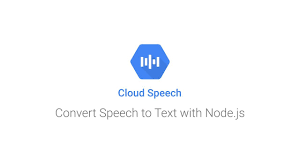
Google Cloud Speech-to-Text is a powerful cloud-based service that converts audio speech into text in over 120 languages. It uses advanced machine learning technology to accurately transcribe spoken words, even in noisy environments, making it an excellent choice for businesses that require high-quality transcription services. The service also includes powerful customization tools, such as the ability to train the service on specific vocabularies and acoustic models to improve accuracy in domain-specific scenarios. Furthermore, Google Cloud Speech-to-Text supports real-time streaming, making it ideal for use cases such as live captioning and voice-controlled applications.
Pros
Cons
Overall Rank
Microsoft Azure Speech Services

Microsoft Azure Speech Services is a cloud-based platform that provides developers with the ability to integrate speech recognition and synthesis into their applications. The platform uses advanced machine learning algorithms to accurately transcribe speech into text and also offers a range of text-to-speech voices that can be customized to match specific requirements. Azure Speech Services also provides support for real-time transcription, speaker identification, and language translation. It is an excellent choice for businesses and developers who want to create applications that require natural language processing capabilities and want to leverage the power of machine learning to improve the accuracy of speech recognition.
Pros
Cons
Overall Rank
IBM Watson Speech to Text

IBM Watson Speech to Text is a powerful tool that converts audio and voice into written text. The technology utilizes deep learning algorithms to transcribe speech with a high degree of accuracy and speed. IBM Watson Speech to Text is designed to be versatile and can be used for a wide range of applications, from creating transcripts of meetings and interviews to generating subtitles for videos. It can also recognize multiple speakers and different languages, making it a valuable tool for businesses operating in a global market. The ability to integrate with other IBM Watson services, such as Natural Language Understanding and Tone Analyzer, further enhances its capabilities and usefulness.
Pros
Cons
Overall Rank
Kaldi

Kaldi is an open-source toolkit designed for speech recognition research. It provides a comprehensive set of tools for building and training automatic speech recognition (ASR) systems. Kaldi is written in C++ and is highly optimized for performance, making it suitable for use on large datasets. One of the key features of Kaldi is its modularity, which allows researchers to easily experiment with different algorithms and models for each stage of the ASR pipeline. Kaldi also includes a range of tools for data preparation, feature extraction, and model training, making it a one-stop-shop for building ASR systems.
Pros
Cons
Overall Rank
Mozilla DeepSpeech
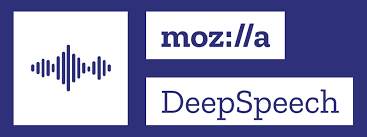
Mozilla DeepSpeech is an open-source speech-to-text engine that utilizes deep learning techniques to accurately transcribe spoken words. It can transcribe audio from a variety of sources, including microphones, audio files, and online streams, making it a versatile tool for speech recognition. DeepSpeech uses a neural network architecture that is trained on a large corpus of data, allowing it to achieve high levels of accuracy even for difficult-to-understand speech. Additionally, its open-source nature means that developers can easily customize and improve the engine to better suit their needs. Overall, Mozilla DeepSpeech is a powerful and flexible tool for speech recognition that has the potential to revolutionize the way we interact with technology.
Pros
Cons
Overall Rank
Pocketsphinx

PocketSphinx is a speech recognition system that uses Hidden Markov Models (HMMs) to recognize speech in real-time. It is an open-source library that supports multiple programming languages and platforms, including Linux, Windows, macOS, and Android. One of its key features is its ability to work offline, making it ideal for applications that require speech recognition but may not have a reliable internet connection. PocketSphinx can recognize a limited set of predefined words and can be trained to recognize custom words and phrases. This flexibility makes it suitable for a wide range of applications, including voice-controlled interfaces, voice search, and hands-free operation of devices.
Pros
Cons
Overall Rank
Speechmatics
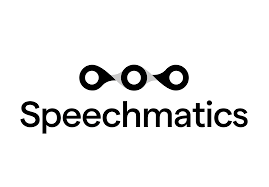
Speechmatics is a cutting-edge speech recognition software that uses deep neural networks to accurately transcribe spoken words into text. What sets Speechmatics apart from other speech recognition systems is its ability to transcribe multiple languages and accents with high accuracy. In addition, Speechmatics offers a wide range of customization options, such as the ability to train models on specific datasets and to fine-tune models for specific use cases. Its user-friendly interface and flexible API make it easy to integrate Speechmatics into a variety of applications and workflows, from call centers to media production. With its powerful and versatile speech recognition technology, Speechmatics is poised to revolutionize the way we interact with voice-enabled devices and applications.
Pros
Cons
Overall Rank
Nuance Dragon Speech Recognition
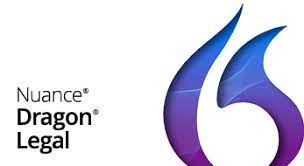
Nuance Dragon Speech Recognition is a powerful and sophisticated speech recognition software that allows users to dictate their text and perform various tasks on their computer hands-free. Its cutting-edge technology can accurately transcribe spoken words into text, making it a great tool for people who suffer from physical disabilities or those who want to improve their productivity. Nuance Dragon Speech Recognition is also customizable, allowing users to create custom commands for repetitive tasks and navigate through documents using voice commands. With its accuracy and adaptability, Nuance Dragon Speech Recognition is an excellent tool for anyone who wants to increase their efficiency and reduce their workload.
Pros
Cons
Overall Rank
Braina Pro

Braina Pro is a cutting-edge AI-powered personal assistant software that can transform the way you work, learn, and communicate. This versatile software allows you to automate your daily tasks, manage your schedule, take notes, and control your computer with just your voice. You can also use it to search the web, read and summarize text, translate languages, and even dictate emails and documents. Braina Pro is designed to be easy to use and can be customized to fit your specific needs, making it a valuable tool for professionals, students, and anyone who wants to boost their productivity and efficiency.
Pros
Cons
Overall Rank
Otter.ai

Otter.ai is an innovative transcription service that utilizes machine learning algorithms to transcribe audio recordings into accurate text in real-time. With its advanced technology, Otter.ai is capable of recognizing and transcribing speech with impressive accuracy, making it an invaluable tool for professionals and students who need to transcribe audio content regularly. The platform also offers additional features such as the ability to highlight key points, add images, and export the transcript in various formats, making it a versatile and comprehensive tool for users. Overall, Otter.ai provides a convenient and efficient solution for audio transcription needs.
Pros
Cons
Overall Rank
Speech Recognition by Online Dictation
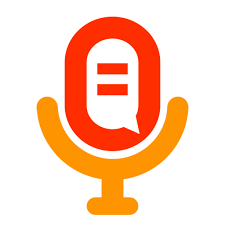
Speech recognition through online dictation is a technology that allows users to convert their spoken words into text. It is a convenient and efficient way to communicate through text without the need to physically type the words. Online dictation software uses sophisticated algorithms and machine learning to accurately transcribe spoken words. It can be especially useful for people with disabilities or those who type slowly. Additionally, online dictation can be a timesaver for busy professionals who need to quickly transcribe notes or emails. With the continued advancement of speech recognition technology, online dictation is becoming increasingly accurate and reliable.
Pros
Cons
Overall Rank
Sonix
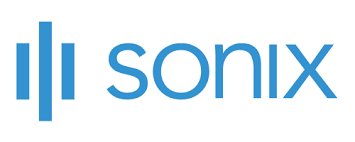
Sonix is an AI-powered transcription and video captioning platform that helps users quickly and accurately transcribe their audio and video content. With its advanced algorithms, Sonix is able to transcribe and caption content in a matter of minutes, saving users valuable time and resources. The platform also offers a suite of editing tools that allow users to easily make corrections, highlight important sections, and add punctuation, making it an incredibly user-friendly and efficient solution for those in need of transcription and captioning services.
Pros
Cons
Overall Rank
Trint
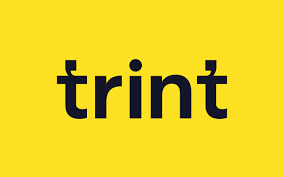
Trint is an innovative and user-friendly platform that automates the transcription process, making it easier and faster for users to convert audio and video files into written text. With its cutting-edge technology, Trint offers a seamless transcription experience that saves time and effort, and allows users to focus on other important tasks. Its AI-powered software can recognize multiple speakers, translate more than 30 languages, and even provide a summary of the content, making it a versatile tool for individuals, businesses, and media organizations. Trint's intuitive interface and competitive pricing also make it an attractive choice for anyone looking for an efficient and reliable transcription solution.
Pros
Cons
Overall Rank
In conclusion, speech recognition technology has come a long way in recent years and continues to improve rapidly. With the help of artificial intelligence, we now have access to a wide range of powerful tools that can transcribe spoken words with incredible accuracy and speed. These AI-powered speech recognition tools are revolutionizing the way we interact with technology, making it easier and more efficient than ever before to dictate, transcribe, and analyze audio content. When it comes to choosing the best AI tools for speech recognition, it's important to consider your specific needs and use cases. Some tools may be better suited for transcribing audio files, while others may excel at real-time speech recognition or voice-to-text conversion. Additionally, factors like pricing, ease of use, and integration with other tools should also be taken into account. Overall, whether you're a content creator looking to transcribe interviews or podcasts, a business professional needing to transcribe meetings or customer calls, or simply someone who wants to dictate notes hands-free, there is an AI-powered speech recognition tool out there that can help you accomplish your goals with ease and efficiency. With the continued advancements in AI technology, we can only expect speech recognition tools to become even more sophisticated and user-friendly in the years to come.
